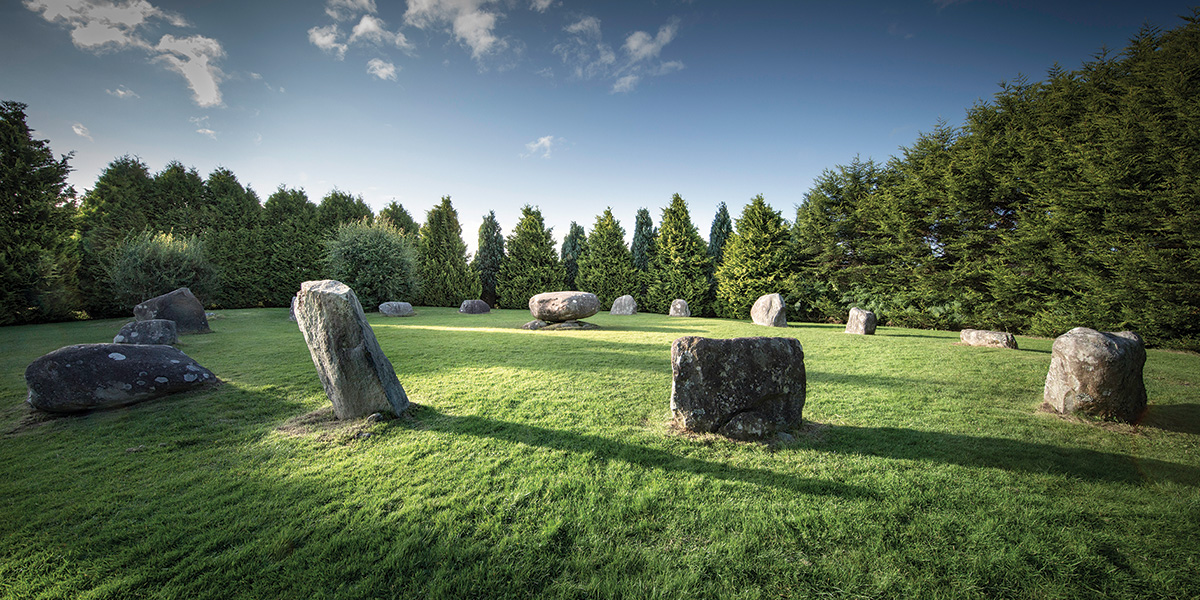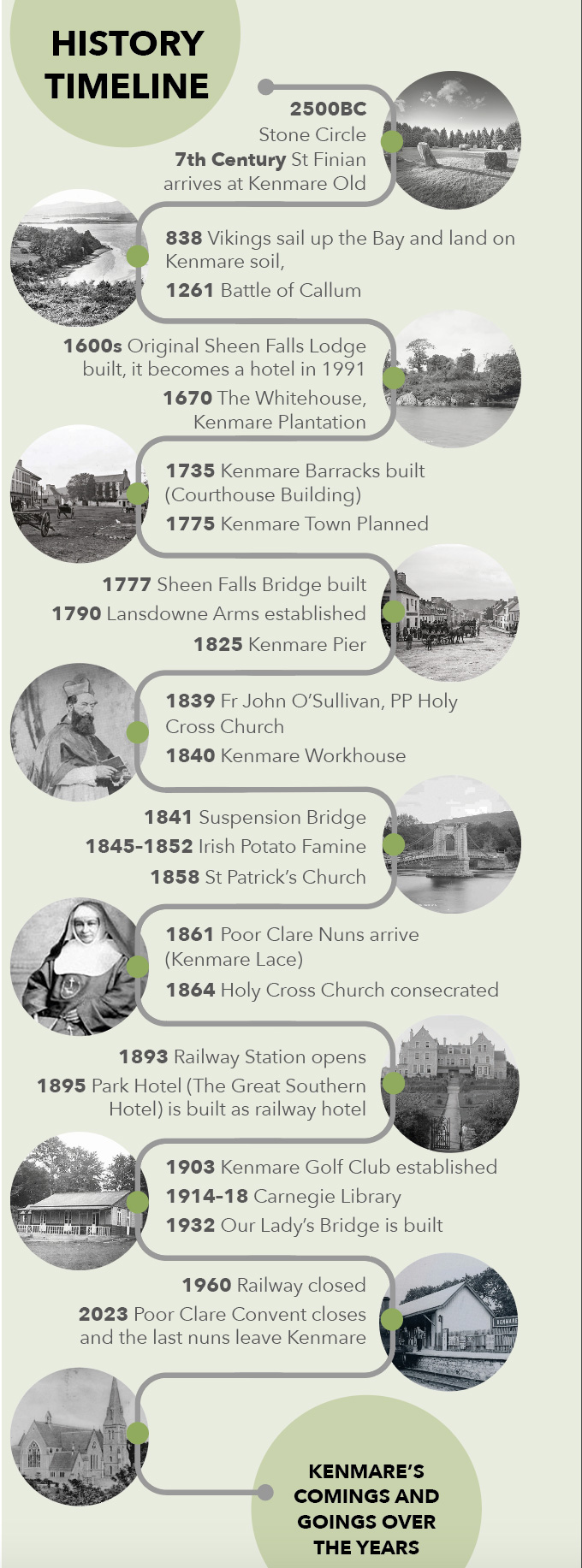
THE HISTORY AND HERITAGE OF KENMARE
Kenmare has ancient roots, the Stone Circle in the town is believed to date back some 3000 years, and it is said that as the 15 stones align precisely with the sun it was used as an agricultural calendar. The Sheen Valley, a beautiful area bordering the town, is custodian of a heritage park that proves a community existed in this area some 5000 years ago.
The rich tapestry of Kenmare’s history unfolds with tales of invasions, ambitious town plans, and a resilient community that persevered through hardship.
Legend whispers of the Vikings’ footsteps on the shores of Ceann Mhara, the ancient Irish name meaning “head of the sea.” Yet, it was Sir William Petty, bestowed with lands post-Cromwellian campaign, who envisioned a settlement named Nedeen in the 1670s, only to have his dreams deferred. It fell upon his descendant, William Petty Fitzmaurice, to breathe life into the town in the late 1700s, christening it Kenmare, a nod to its Gaelic origins, and eschewing the perceived ignominy of “Nedeen.”
The town’s symmetrical layout, a testament to meticulous planning, owes its design to the skilled hand of surveyor John Powell. Main Street, Henry Street, and Shelbourne Street converge in a triangular embrace, each bearing the imprint of historical figures like Sir William Petty and his kin.
Kenmare’s story bears witness to the trials of the famine era – yet amid the desolation, hope blossomed. In 1861, a band of compassionate nuns, heeding the call of distress, arrived to find a community ravaged by hunger and hardship. Guided by the vision of Fr. John O’Sullivan, they embarked on a mission of education, establishing a beacon of learning in the heart of adversity.
From humble beginnings in “Rose Cottage” to the grandeur of the Holy Cross Church, the journey of the Poor Clare nuns intertwined with the fabric of Kenmare. Their legacy endures, embodied in the halls of Pobailscoil Inbhear Scéine, a testament to the transformative power of education.
The echoes of philanthropy resonate through Kenmare’s streets, epitomized by the Carnegie Library, a sanctuary of knowledge gifted by Andrew Carnegie and brought to life by architect R.M. Butler in 1918. Today, it stands as a bustling hub of culture, housing the esteemed Carnegie Arts Centre, a stage for local talent and global luminaries alike.
Bridging past and present, the waters of Kenmare Bay flow beneath the watchful gaze of Ireland’s first suspension bridge, a marvel of engineering crafted by William Bald in 1841. Though replaced by a sturdier counterpart in 1932, its spirit lives on as an enduring emblem of Kenmare’s resilience and ingenuity.

